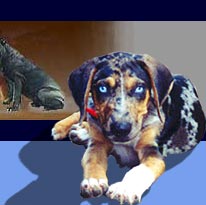.
.
.
What causes gastric dilatation and volvulus?
There is not one particular activity that leads to the development of GDV. It appears that it occurs as a combination of events. Studies of the stomach gas that occurs in dilatation have shown that it is similar to the composition of normal room air suggesting that the dilatation occurs as a result of swallowing air. All dogs, and people for that matter, swallow air, but normally we eructate (burp) and release this air and it is not a problem. For some reason that scientists have not yet determined, these dogs that develop bloat do not release this swallowed gas. There is currently several studies looking into what happens physiologically in these dogs that develop GDV.
What are the signs?
The most obvious signs are abdominal distention (swollen belly) and nonproductive vomiting (animal appears to be vomiting, but nothing comes up) and retching. Other signs include restlessness, abdominal pain, and rapid shallow breathing. Profuse salivation may indicate severe pain. If the dog's condition continues to deteriorate, especially if volvulus has occurred, the dog may go into shock and become pale, have a weak pulse, a rapid heart rate, and eventually collapse. A dog with gastric dilatation without volvulus can show all of these signs, but the more severe signs are likely to occur in dogs with both dilatation and volvulus.
How is gastric dilatation and volvulus treated?



